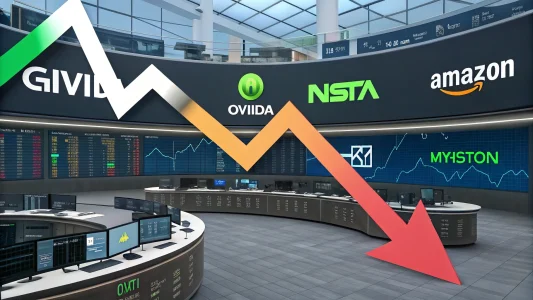As the year winds down, retirees must also plan for one of the most essential tax deadlines: required minimum distributions (RMDs).
Retirees are required to withdraw a minimum amount from certain tax-deferred accounts every year, including traditional IRAs, 401 (k) s, and 403(b)s. These distributions are called Required Minimum Distributions (RMDs), and the rules differ by birth year:
- Those born between 1951 and 1959 must begin RMDs at age 73.
- 75 is the starting age if you were born in 1960 or later.
Miss an RMD deadline, and you could face a steep penalty — a 25% excise tax (though this can be reduced to 10% if you fix it quickly).
While RMDs are mandatory, their tax bite is not. When you plan ahead before December 31, you’ll be able to minimize taxes and even use your withdrawals strategically — whether it’s for retirement income, charitable giving, or a legacy.
Let’s explore RMDs and how to incorporate them into your year-end financial plan.
Table of Contents
ToggleWhat Are RMDs and Why Do They Matter?
For decades, your tax-deferred retirement accounts, like an IRA or 401(k), have helped you grow your wealth without paying income taxes each year. However, the IRS eventually wants its cut.
That’s where RMDs come in. Withdrawals begin the year you turn the eligible age (currently 73), and they’re calculated using the account balance at the end of the previous year divided by the IRS’s life expectancy factor.
Here’s a simplified example;
Using the IRS factor of 25.5, the required minimum distribution for 2025 would be approximately $19,600.
The problem? Withdrawals count as ordinary income and can put you in a higher tax bracket — affecting your federal taxes, Medicare premiums, and Social Security benefits.
RMD planning isn’t just about compliance — it’s about managing income and tax exposure.
1. Don’t Wait Until December to Withdraw
When it comes to RMDs, waiting until the last minute is one of the most common mistakes.
In case your financial institution is backlogged with year-end withdrawal requests, you may face a cash crunch, poor investment timing, or missed processing deadlines.
But, when you spread your withdrawals throughout the year, you can;
- Predictably manage your tax withholding.
- Avoid selling investments during market dips.
- Smooth out your taxable income rather than taking one significant hit in December.
It’s okay if you have already waited this long — but don’t let it drag on. To ensure your RMD is processed before December 31, contact your financial institution as soon as possible.
2. Use a Qualified Charitable Distribution (QCD)
It’s possible to reduce RMD-related taxes by giving through a Qualified Charitable Distribution (QCD).
QCDs are tax-efficient ways for individuals 70 ½ and older to donate to charity directly from their IRAs. In 2025, the distribution can be up to $108,000 per person, counts toward the Required Minimum Distribution (RMD), and is not taxable. For a QCD to be valid, the donation from the IRA must go directly to the charity, not through you
In other words;
- As long as your adjusted gross income (AGI) does not increase, you will satisfy your RMD.
- You may avoid putting yourself into a higher tax bracket.
- There’s a possibility of reducing the amount of Social Security that is taxed
Example;
To meet your RMD requirement, you only need to withdraw another $10,000, and you will only report that $10,000 as taxable income.
Even when claiming the standard deduction, QCDs allow you to benefit from charitable giving even if you don’t itemize deductions.
3. Consider Roth Conversions Before RMD Age
In contrast to tax-deferred accounts, Roth IRAs are not subject to RMDs — meaning you don’t have to withdraw money during your lifetime.
This makes Roth IRA conversions an appealing preemptive strategy. When you convert a portion of your traditional IRA into a Roth before your RMDs begin, you will;
- Taxes can be paid now (at potentially lower rates).
- Reduce future RMD amounts.
- Build a source of tax-free income for retirement or for heirs.
Ideally, you want to start conversions when you are in your 60s or early 70s, when your income and taxable income are lower due to RMDs.
Pro tip: By converting smaller amounts over time, you can avoid having to pay a large one-time tax bill.
4. Use RMDs Strategically to Fund Retirement Expenses
Think of RMDs as pre-scheduled retirement paychecks instead of a burden.
Instead of adding RMDs to existing withdrawals for living expenses, use them to replace or supplement those withdrawals.
For example;
- You can use RMD funds to pay for travel, insurance premiums, and property taxes.
- Reinvesting RMD income strategically in a taxable brokerage account.
- Put money toward long-term care or medical expenses that may qualify for deductions.
With this approach, you ensure that your RMDs not only meet tax rules but also support your lifestyle and cash flow.
5. Manage RMDs Across Multiple Accounts
You should understand how to aggregate RMDs if you have multiple IRAs, 401(k)s, or other retirement plans.
- Traditional IRAs. As long as you calculate the total RMD amount across all IRAs, you can withdraw the full amount from one or more accounts.
- 401(k)s and 403(b)s. Since withdrawals cannot be combined, each plan must be handled separately.
If you withdraw funds from the wrong account, you could be penalized since your RMD requirements won’t be met.
A simple way to manage this? If you have older retirement accounts or 401(k)s, you should consolidate them or roll them over into an IRA before RMDs begin. By doing so, calculations are simplified and oversights are minimized.
6. Reinvest RMDs to Keep Your Money Working
Required Minimum Distributions (RMDs) cannot be reinvested into tax-deferred accounts, but they can be used to fund spousal IRAs — if eligible. In addition to index funds, municipal bonds, and dividend stocks, you can invest RMD money in taxable accounts.
Among the options are;
- Fund a spousal IRA. You can contribute to a spousal IRA on behalf of your spouse if they don’t have an income or have low earnings.
- Invest in taxable accounts. RMDs can be invested in taxable accounts for long-term growth, in tax-efficient index funds, in tax-free municipal bonds, or in dividend-paying stocks for cash flow.
- Contribute to a 529 plan. Contribute to a family member’s 529 college savings plan. When withdrawals are made for qualified education expenses, the money grows tax-free.
- Purchase other assets. In addition to stocks, bonds, and real estate, standard brokerage accounts allow you to invest in other assets as well.
Even outside of retirement accounts, this strategy can help you offset the taxes you pay on RMDs.
7. Coordinate RMDs With Social Security and Medicare
In addition to your tax bill, your RMDs can also affect your Social Security taxation and Medicare premiums (IRMAA).
For example;
- You can be taxed on up to 85% of your Social Security benefits if you have a higher income from RMDs.
- Your Part B and D premiums can also increase two years later, depending on your modified adjusted gross income (MAGI).
That’s why income management and timing are important. A financial advisor or CPA can help you forecast your income and identify how partial Roth conversions or charitable giving can reduce your MAGI over the long term.
8. Don’t Forget the First-Year Exception
You can delay your first RMD until April 1 of next year if you turned 73 this year.
The downside of delaying is that you’ll have to take two RMDs in the same tax year — one for the prior year and one for the current year. This could potentially double your taxable income.
Generally, retirees should take their first RMD in the same calendar year to avoid stacking. However, you may want to delay if your income is unusually high this year — for example, from the sale of a business.
The Bottom Line
Every retiree must make Required Minimum Distributions, but their tax burden varies.
Using tools such as Qualified Charitable Distributions, Roth conversions, and reinvestment strategies, you can enhance your retirement income strategy and optimize your taxes.
The key is to act before the end of the year. After all, you will have fewer options after January 1. Double-check your calculations and consult with your financial or tax advisor to ensure your RMDs work for you, not against you.
FAQs
What happens if I miss my RMD deadline?
You may be subject to a 25% penalty on the amount you should have withdrawn if you fail to take your RMD by December 31. It may, however, be possible to reduce the penalty to 10% if you correct the error promptly (typically within two years) and file Form 5329.
Can I take my RMD in monthly installments instead of a lump sum?
Yes. If you prefer, you can make your RMDs monthly, quarterly, or in one payment. It’s common for retirees to withdraw money monthly to create a steady income stream and avoid year-end market risk
Do Roth IRAs have RMDs?
No. Although Roth IRA owners are exempt from RMDs during their lifetimes, beneficiaries may be subject to RMDs under current rules.
What if I’m still working at age 73?
While still employed, you can usually defer your RMDs from your current employer’s 401(k) until you retire. However, you must still take RMDs from old IRAs or 401(k)s.
How do RMDs affect my heirs?
Unless the account is a Roth IRA, RMDs affect heirs by imposing a mandatory withdrawal schedule for inherited retirement accounts. Depending on the original owner’s death date, their RMD status, and their relationship to the deceased, specific rules may apply.
Generally, non-spouse beneficiaries must wait 10 years before completely emptying an account, while spouses may have different options, and Eligible Designated Beneficiaries (EDBs) may have an exception.
Image Credit: Thirdman; Pexels

















